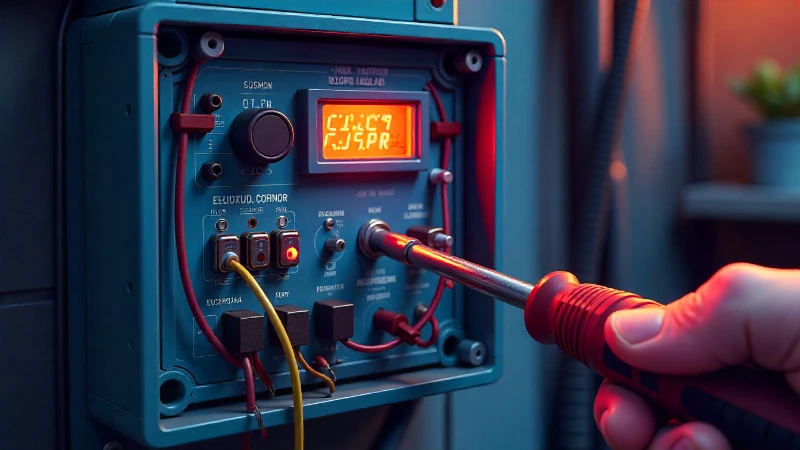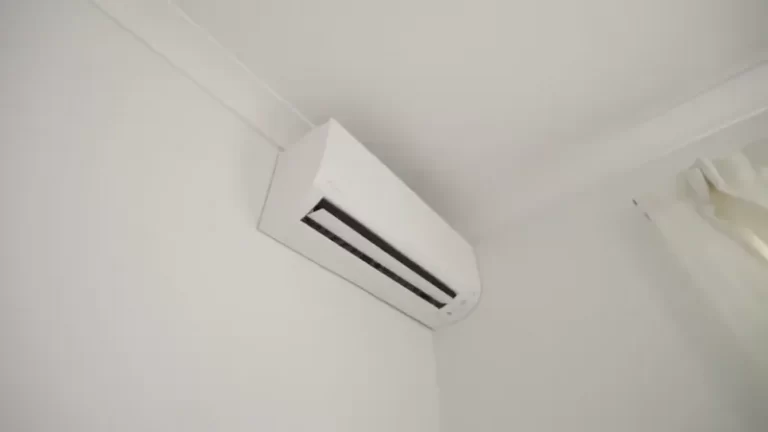Mr. Heater Big Maxx Short Cycling? Here’s Your Fix!
There’s nothing more frustrating than a garage heater that won’t stay running. You fire up your Mr. Heater Big Maxx, it runs for a few minutes, and then shuts off—only to repeat the process moments later. This annoying issue, known as short cycling, not only leaves your workspace cold but also puts unnecessary strain on the heater’s components. Fortunately, you can often resolve this problem yourself with a bit of troubleshooting.
This comprehensive guide will walk you through the common causes of Mr. Heater Big Maxx short cycling and provide clear, actionable steps to get your heater running smoothly and reliably once again.
You'll Learn About
Understanding Why Your Heater is Short Cycling
Short cycling occurs when a furnace or heater turns on and off too frequently without completing a full heating cycle. For a Mr. Heater Big Maxx, this is almost always a safety mechanism kicking in. The heater’s internal controls detect a potential problem and shut the unit down to prevent damage or an unsafe condition. The key is to identify what’s triggering that safety response.
The most common culprits behind short cycling fall into a few main categories: overheating due to airflow restrictions, faulty sensors, or issues with the gas supply and venting.
The High Limit Switch: Your Heater’s First Line of Defense
One of the most frequent causes of short cycling is a tripped high limit switch. This safety device monitors the temperature inside the heat exchanger. If the temperature exceeds a preset limit, the switch opens the electrical circuit, shutting off the gas valve to prevent the unit from overheating. Once the unit cools down, the switch resets, and the heater tries to start again, leading to the on-off cycle.
Several factors can cause the high limit switch to trip:
- Restricted Airflow: The heater needs adequate space around it to draw in cool air and circulate warm air. If the unit is installed too close to a wall or ceiling, or if storage boxes and other items are blocking the air intake, it can’t breathe properly. This leads to a rapid buildup of heat.
- Dirty or Blocked Filters: Although many Big Maxx unit heaters don’t have traditional filters, debris, dust, and sawdust can accumulate on the fan blades and inside the unit, impeding airflow.
- Incorrect Gas Pressure: If the gas pressure is set too high, the flame will be too large, causing the heat exchanger to get too hot, too quickly. This is a common issue, especially if the unit was recently installed or converted from natural gas to propane.

Troubleshooting Step-by-Step: Finding the Root Cause
Ready to diagnose your heater? Follow these steps logically. Always turn off the power and shut off the gas supply to the heater before performing any inspection or maintenance.
1. Check for Overheating and Airflow Issues
Start with the simplest potential problems. Ensure there’s at least one foot of clearance on all sides of the heater for proper air circulation. Remove any obstructions around the unit. Look at the fan blades and the interior of the heater for any significant buildup of dust or debris and clean it out carefully with a soft brush or compressed air.
Some users have found success by simply reducing the gas flow to the unit slightly. If the flame inside the heat exchanger appears excessively large or turbulent, slightly turning down the gas valve could prevent the high limit switch from tripping. This can be a simple fix for a heater that’s getting too hot, too fast.
2. Inspect the Flame Sensor
A dirty or faulty flame sensor is another top cause of short cycling. The flame sensor’s job is to confirm that a flame is present when the gas valve is open. If it can’t detect a flame, it shuts off the gas as a safety measure to prevent raw gas from pumping into your space.
If the sensor is coated in soot or carbon, its ability to detect the flame is compromised. It might work for a few minutes, but as the unit runs, the inconsistent signal can cause it to shut down. The heater will then try to restart, leading to short cycling.
How to Clean the Flame Sensor:
- Locate the Sensor: The flame sensor is a thin metal rod, usually with a white porcelain insulator at its base, positioned in the path of the flame.
- Remove the Sensor: It’s typically held in place by a single screw. Carefully remove it.
- Clean Gently: Use a piece of light-grit sandpaper or steel wool to gently clean the metal rod. The goal is to remove the carbon buildup without scratching the metal.
- Reinstall: Securely place the sensor back in its original position.
Often, a simple cleaning is all that is needed to resolve the issue. If the problem persists after cleaning, the sensor itself may have failed and needs replacement.
3. Examine the Pressure Switch and Venting
The pressure switch is a safety device that ensures the venting system is clear and the exhaust fan (inducer motor) is working correctly. It detects a negative pressure created by the fan, confirming that harmful exhaust gases can be safely vented outside. A problem here can lead to an abnormal combustion chamber temperature profile during heating cycle and trigger a shutdown.
If the vent pipe is blocked by a bird’s nest, snow, or other debris, the pressure switch won’t close, and the heater won’t ignite. Sometimes, a partial blockage can cause intermittent issues, leading to short cycling. It’s also worth checking for any clogs if you’ve ever had issues with a frozen sewer vent, as similar blockages can occur in heater vents. If you’ve wondered how do you unfreeze a sewer vent pipe, the principle of clearing a blockage is similar.
A common failure point is the small rubber hose connecting the inducer motor housing to the pressure switch, or the port on the housing itself. This port can become clogged with debris or corrosion.
How to Check the Pressure Switch System:
- Inspect the Vent Termination: Check the exterior vent cap for any visible obstructions.
- Check the Hose and Port: Disconnect the rubber hose from the inducer motor. Use a small wire or paperclip to gently clean out the port on the motor housing. Inspect the hose for cracks or blockages and clear it if necessary.
Advanced Troubleshooting: Thermostat and Control Board
While less common, your thermostat or the main control board can also be the source of short cycling. A malfunctioning thermostat can send erratic signals to the heater. Incompatible thermostats, especially some smart thermostats, may not work correctly with the Big Maxx’s simpler electrical system.
Sometimes, the issue is as simple as needing to ensure the electrical rough-in for stackable washer dryer and other appliances provides stable power, which can also affect sensitive electronics in heaters.
Thermostat Troubleshooting Steps
- Check Wiring: Ensure the thermostat wires are securely connected at both the thermostat and the heater’s control board. Loose wiring is a frequent cause of intermittent problems.
- Bypass the Thermostat: To rule out a faulty thermostat, you can temporarily bypass it. Disconnect the two thermostat wires at the heater unit and carefully twist them together. If the heater runs continuously without short cycling, the thermostat is likely the problem.
- Verify Compatibility: If you are using a smart or programmable thermostat, check the manufacturer’s documentation to ensure it is compatible with your Mr. Heater Big Maxx model.
Diagnostic Codes and Quick Reference
Many Mr. Heater Big Maxx models have an LED light on the control board that flashes a code to help diagnose problems. The meaning of these codes is usually printed on a sticker inside the access panel. This table summarizes common issues and their likely causes.
| Symptom | Potential Cause | Recommended Solution |
|---|---|---|
| Heater runs for 1-5 minutes, then shuts off. | High Limit Switch Tripping | Check for airflow obstructions, clean the unit, verify proper gas pressure. |
| Heater ignites, flame goes out after a few seconds. | Dirty or Faulty Flame Sensor | Clean the flame sensor rod with light sandpaper or steel wool. Replace if cleaning doesn’t work. |
| Blower runs, but heater never ignites (3 Flashes on LED). | Pressure Switch Issue | Inspect vent for blockages. Clean the port on the inducer motor and check the connecting hose. |
| Heater operates erratically. | Thermostat Issue | Check wiring connections. Test by bypassing the thermostat. Verify compatibility. |
When to Call a Professional
While many causes of short cycling can be fixed with basic DIY troubleshooting, there are times when you should call a qualified HVAC technician. If you are not comfortable working with gas or electrical components, or if you suspect an issue with the gas valve, control board, or internal wiring, it is always safest to seek professional help. An expert can accurately measure gas pressure, diagnose complex electrical faults, and ensure your heater operates safely and efficiently.
By systematically working through these troubleshooting steps, you can identify and fix the most common causes of Mr. Heater Big Maxx short cycling. A little bit of maintenance and inspection can go a long way in ensuring your garage or workshop stays warm and comfortable all winter long.

